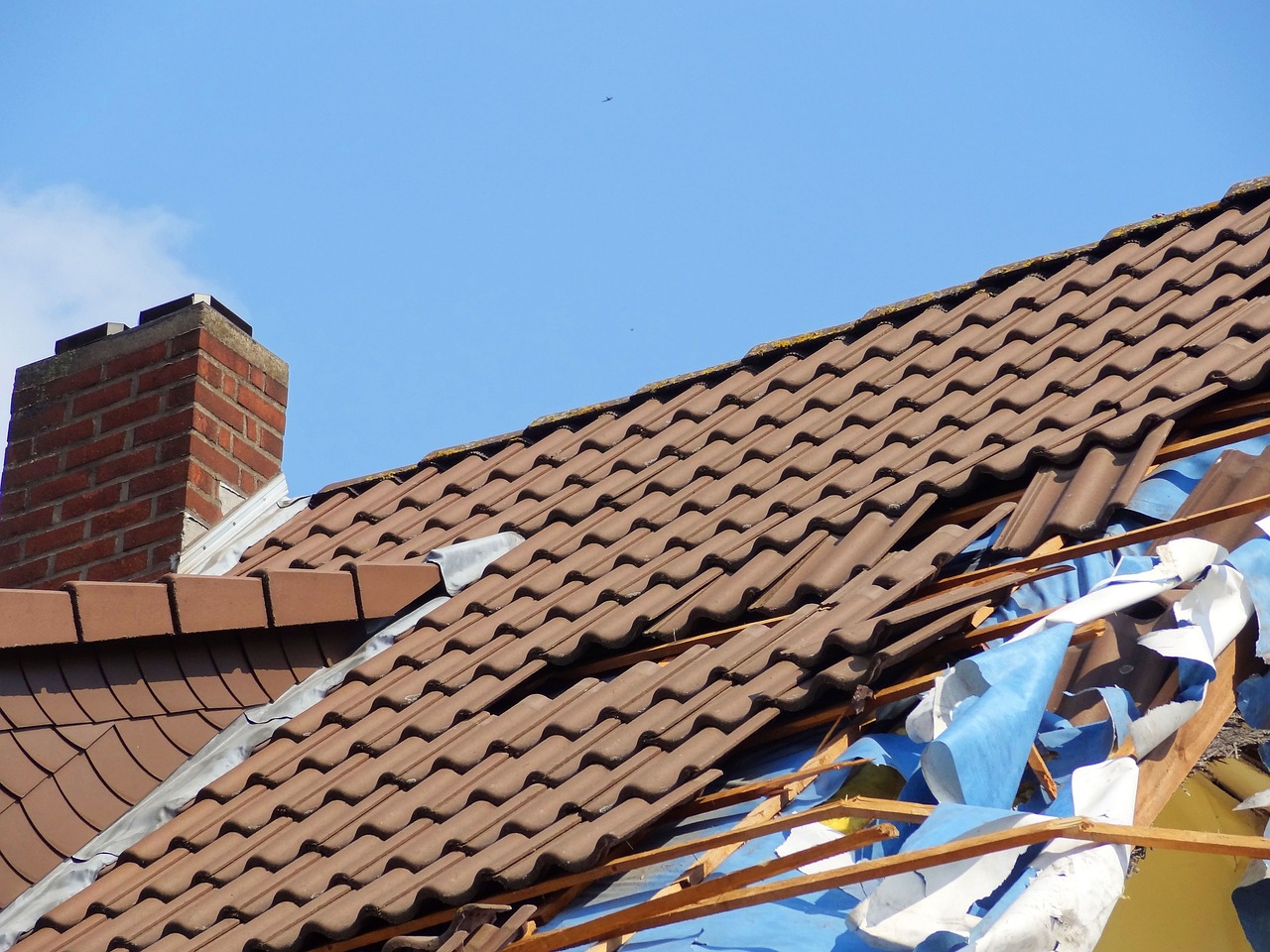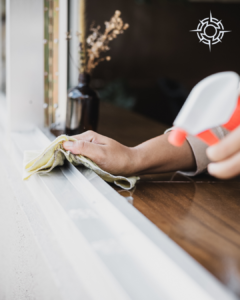In the heart of the Twin Cities, homeowners experience diverse weather conditions, from beautiful sunny days to extreme storms that can leave houses, especially roofs, worse for wear. Having a good insurance policy in place is crucial to counter such unexpected mishaps, including getting insurance to pay for a roof replacement.
Most homeowners’ insurance policies offer coverage for roof damage caused by unpreventable incidents or “acts of God.” Examples of these incidents include fires, hurricanes, tornadoes, and hail. Nevertheless, policies will vary between insurance companies and even between individual policies.
As a rule of thumb, insurance providers typically cover roof damage that is not caused by neglect. This means if a roof was in poor condition before a storm hit, the insurance company might decline the claim. To avoid this, it’s essential to maintain your roof and have routine inspections to ensure any minor issues are resolved before they escalate.
Navigating the Storm Damaged Roof Insurance Claim Process

When a storm hits and causes damage, it is important to begin the roof insurance claim process as soon as possible. Here’s a step-by-step guide:
- Assessment: While checking for visible signs of damage, safety should be your primary concern. Do not climb onto your roof unless you have the right safety equipment and know how to use it properly. If you can, use binoculars to inspect your roof from the ground. Also, don’t forget to check the interior of your home for signs of leaks, such as water stains on your ceiling or walls.
- Documentation: When taking photographs, ensure they are clear and detailed. Try to include some with a point of reference to show the scale of the damage. If you have “before” photos of your roof (which are good practice to have in general), include those to demonstrate the contrast between the roof’s previous state and the current damaged state.
- Professional Inspection: When contacting a local Minneapolis roofing contractor, make sure they are licensed and insured. Check their reviews or ask for references to ensure you’re dealing with a reputable professional. If possible, be present during the inspection so you can understand firsthand the extent and nature of the damage.
- Contact Insurance Company: When you notify your insurance company, be prepared to provide as much information as possible. This includes the time and date of the storm, the type and extent of the damage, and any steps you’ve taken to mitigate further damage. Ask them about the next steps in the claim process and note down all relevant information, including claim numbers and the names of people you speak to.
- Compare Reports: It’s crucial to obtain a copy of the adjuster’s report to compare it with the contractor’s. If discrepancies exist, discuss them with your contractor and ensure they’re ready to defend their assessment. Be proactive in communicating any discrepancies to your insurer as well, and provide them with any additional evidence or arguments your contractor puts forth.
Role of Minneapolis Roofing Contractors in the Process
Working with trusted Minneapolis roofing contractors is key in getting your insurance to cover a roof replacement. Their role is vital in several ways:
- Inspection: It’s important to remember that the roofing contractor you choose should be local, experienced, and reputable. Be wary of “storm chasers,” companies that travel to areas hit hard by recent storms. While not all are illegitimate, some can deliver shoddy work and then leave town. A local, established contractor will be there to stand by their work if issues arise down the line.
- Documentation: Ensure the roofing contractor’s documentation is thorough. This includes clear photos of the damage (preferably with timestamps), a written description specifying the extent and location of damage, and a comprehensive damage report. You should receive a copy of all these documents for your records and for submission to your insurance company if needed.
- Liaising with Insurance Adjuster: Your contractor’s role in meeting with the adjuster goes beyond merely ensuring all damage is properly accounted for. They should also be able to effectively communicate the technical aspects of the damage and the necessary repairs. Make sure your contractor is prepared to articulate these details in terms that the adjuster can understand and relate to the specifics of your policy coverage.
- Dispute Resolution: In the event of a disagreement between your contractor’s and adjuster’s assessments, the contractor’s role becomes even more crucial. They must be willing and able to stand by their evaluation and provide reasoned arguments supported by their expertise and the detailed documentation. Remember, it’s not just about contradicting the adjuster; it’s about presenting a compelling case for the validity of your claim. Be prepared for this process to take some time, and be ready to participate actively, providing any additional information or documentation requested by the insurance company.
Efficient Strategies: Hail Damage on Roof Insurance Claims

In the Twin Cities, hail storms are not an uncommon event, often leading to hail damage on roof insurance claims. When dealing with this specific type of claim, here are some additional tips:
- Immediate Action: Hail damage may not always be apparent right after a storm. However, it’s crucial to inspect your roof as soon as it is safe to do so. If you suspect any damage, report it to your insurance company immediately, even if you’re unsure of the extent. Remember, unnoticed damage can lead to more severe issues such as leaks or structural weakness. In cases where damage isn’t immediately visible, it’s still beneficial to have a record of the hailstorm with your insurer. This can provide valuable context if issues arise later.
- Professional Assistance: While it’s important to have an experienced roofing contractor identify hail damage, make sure you’re working with a licensed and insured contractor. It’s also worth noting that some contractors specialize in storm and hail damage repairs – these professionals can be especially beneficial in these scenarios. They are experienced in working with insurance companies and can guide you on the best course of action to get your claim approved.
- Proper Documentation: Documenting the size of the hail, the intensity of the storm, and the damage caused is crucial. If possible, collect hailstones and store them in your freezer. They can serve as physical evidence of the storm’s severity. Also, take pictures of the storm if it’s safe to do so, focusing on capturing hailstone size against a common object like a coin or a ruler. Save any local news reports or weather data about the storm, as this could corroborate your claim. Don’t forget to photograph all areas of damage, not only to the roof but also to surrounding areas of your property, such as damaged plants or outdoor furniture. This comprehensive visual evidence can paint a compelling picture of the storm’s intensity, further substantiating your claim.
Tips to Get Your Roof Insurance Claim Approved Quickly
Getting insurance to pay for a roof replacement can be a lengthy process. However, these tips can help you expedite the process:
- Maintenance Records: Not only should you keep records of all your roof maintenance and inspections, but also ensure that they are detailed. For example, include what was done, the date, and who performed the service. This can be crucial in showcasing a well-maintained roof. Additionally, save all receipts related to roofing work. These documents prove your commitment to maintaining the integrity of your roof, which can strengthen your claim.
- Prompt Reporting: Besides reporting the damage to your insurance company as soon as it occurs, also make temporary repairs to prevent further damage. Remember, your policy may require you to prevent additional damage where possible. Be sure to document these efforts as well, including the costs, as they may be reimbursable under your policy.
- Professional Estimates: When getting a professional estimate, make sure it includes a comprehensive breakdown of costs – from labor and materials to the time it would take to complete the repairs. It’s also advisable to obtain estimates from more than one contractor. This way, you can better negotiate with your insurance company if their proposed payout seems too low.
- Detailed Documentation: In addition to keeping photos, maintenance records, and reports organized, it can be beneficial to keep a claim diary. This can include dates and summaries of communications with your insurance company, the claim number, and any actions taken related to the claim. Such meticulous documentation could be invaluable if there are disagreements or delays during the claims process.
- Patience: Lastly, keep in mind that patience and persistence often pay off in insurance claims. While the process can be time-consuming and, at times, frustrating, being proactive and organized can greatly increase the likelihood of a favorable outcome.
With the unpredictable weather in the Twin Cities, having a solid understanding of your roof insurance coverage can save you time and money when dealing with storm damage. Engaging a reputable Minneapolis roofing contractor can be a valuable ally in the roof insurance claim process. In the end, prompt action, detailed documentation, and professional help can expedite your claim process, ensuring your home is quickly returned to its secure, comforting state.











